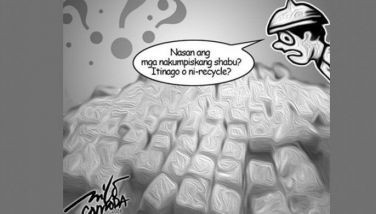My Australia Day tribute to Filipino Australians

Filipinos love meat and Australia is the largest exporter of red meat to the Philippines. Beef is one of our top five exports and sheepmeat exports grew nearly 30 percent in 2016. Aussies too are partial to throwing a juicy slab of meat on the barbie (BBQ) and many will do so to commemorate Australia Day today.
You might be wondering why I am focusing on meat this Australia Day, particularly if you are a vegetarian? An Australian Meat and Livestock Corporation television commercial* for Australian lamb has captured the heart of the nation. It features an indigenous family hosting an Australia Day barbie on the beach as successive groups of visitors arrive and join the party. These people represent the waves of migration to Australia since European settlement in 1788.
I love the advert for the irreverent way it conveys an important message about Australian history and what it means to be an Australian today. But one group that is missing from the party-goers is the early Filipino immigrants to Australia. On this Australia Day, I would like to fix that by paying tribute to those Filipino migrants and their offspring, who have made such an invaluable contribution to the Australian family.
The experiences of these early settlers and their families was little documented until the ground-breaking publication this year “Re-imagining Australia – Voices of Indigenous Australians of Filipino Descent” by Deborah Ruiz Wall and Christine Choo. This book is a compelling social history which explores poignant themes of family, identity and belonging. I was privileged to launch it at the Cultural Center of the Philippines in the presence of some of the descendants of these families, many of whom were visiting the Philippines for the first time.
Filipino migration to Australia can be traced back to the 1880s when intrepid young men sailed to Australia to work in the pearling industry in Broome off Western Australia and in the Torres Strait. It didn’t take long for them to form relationships with locals, often indigenous women, and to build their lives in Australia. They passed on their Filipino traditions and in doing so created their own uniquely blended culture.
In the words of Mick Torres from Broome “The musical talent was passed down, the love of dancing, the love of gathering, and eating food together – I remember just one dish that my Dad and Uncle Owen used to make – dinuguan. ….It was a special dish that was ours and nobody else made it quite the way that all those elders like …all of that mob did.”
I was struck by the strong emotions the modern day descendants felt on returning to the Philippines. Peter Sabatino recounted the overwhelming feeling of belonging he experienced from a “non-rational” source on landing for the first time in Manila, the land of his grandfather.
Kevin Puertollano encapsulates better than I can his unique identity “I know I have been asked many times if I am a Filipino or an Aboriginal. And I say “Well I can’t help myself. The Filipinos came here and they had an influence, and I’m me. I can only be me.” He also appreciates Aboriginal people’s recognition of his Aboriginality.
When I was looking for the “lamb ad” for this article the search engine intuitively came up with various recipes for lamb adobo. What an ironically prescient symbol of the rich cultural melting pot created by these Filipino Australians and their forebears. Thank you for your special contribution and Maligayang Bati on Australia Day 2017!
(Amanda Gorely is the Australian Ambassador to the Philippines.)
- Latest
- Trending

























